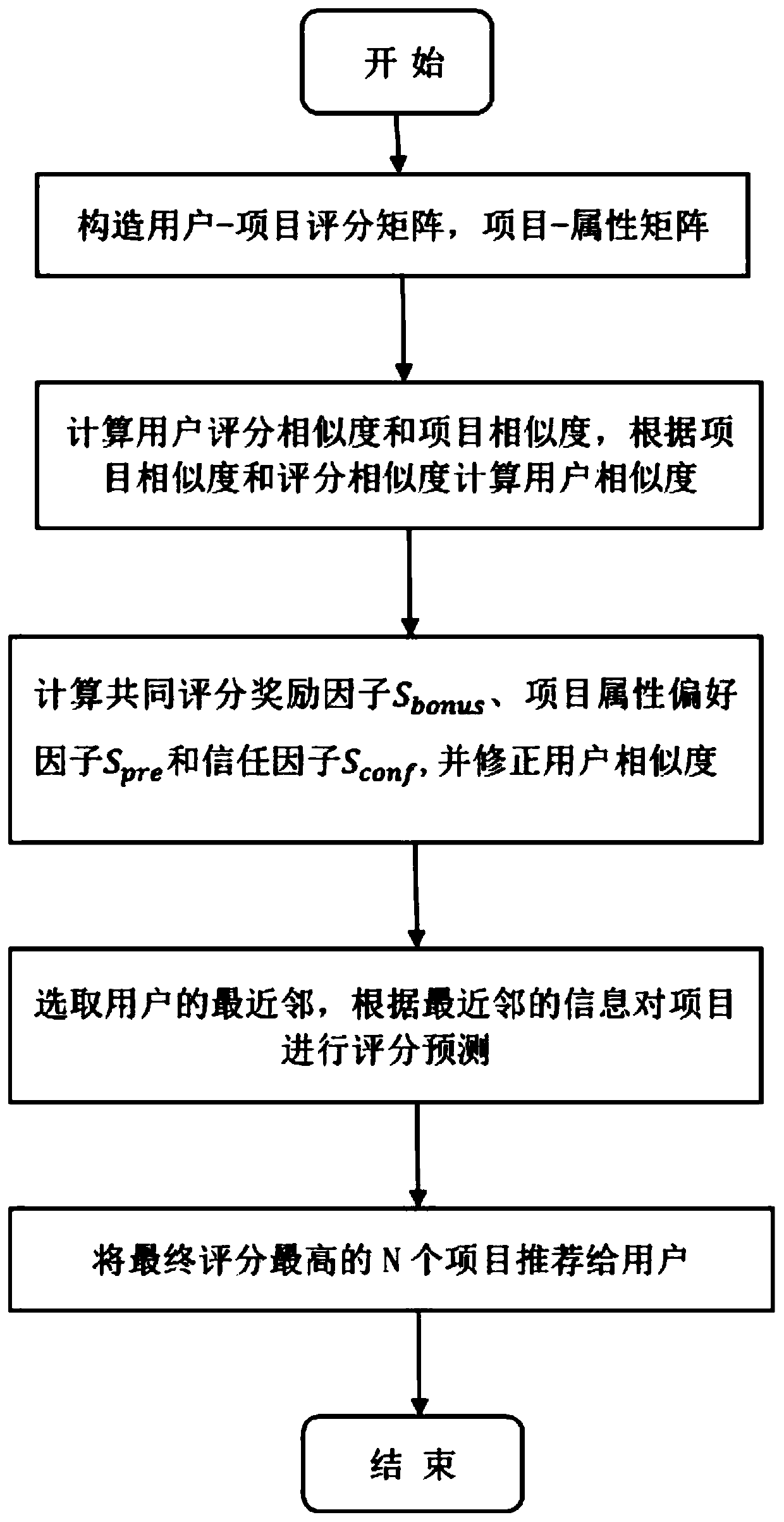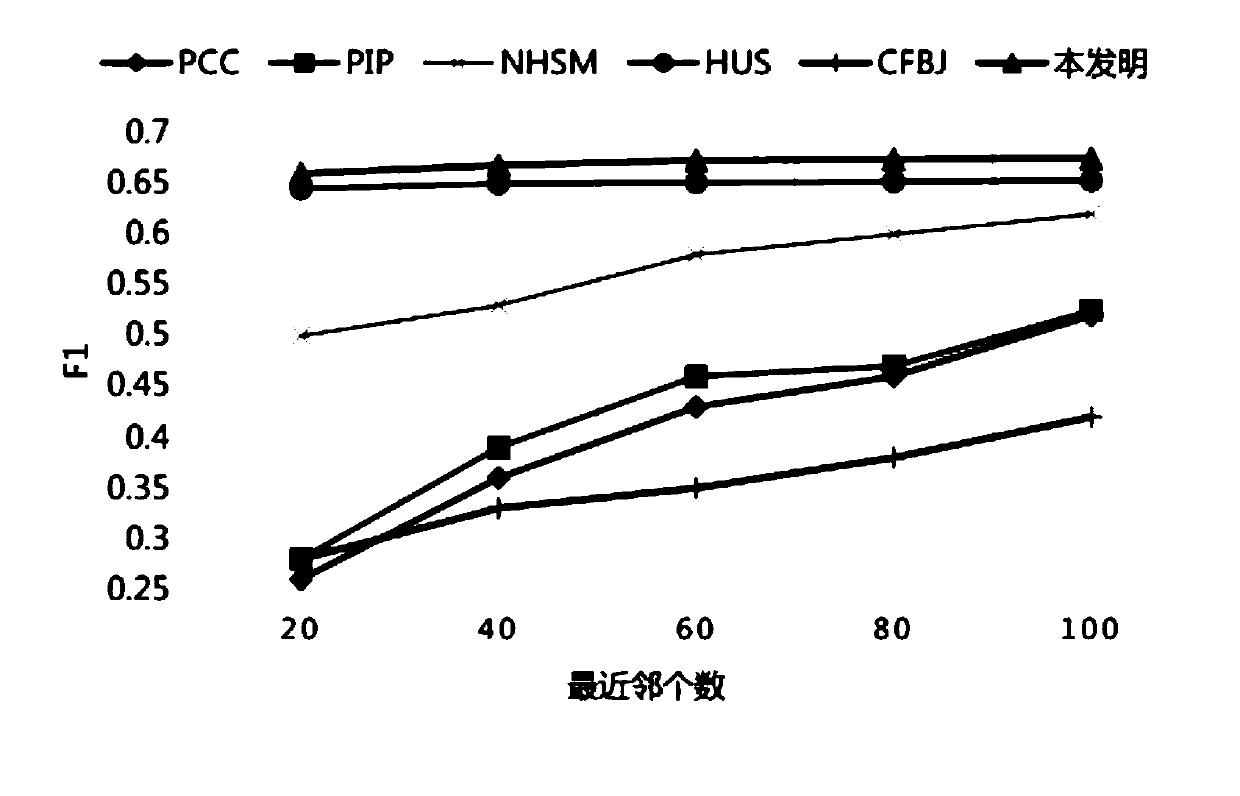Hybrid collaborative filtering recommendation algorithm based on project attributes
A hybrid collaborative filtering and item attribute technology, applied in the field of recommendation systems, can solve the problems of not considering user similarity, ignoring the influencing factors of user similarity, not considering different user preferences, etc., and achieving strong interpretability , good adaptation effect
- Summary
- Abstract
- Description
- Claims
- Application Information
AI Technical Summary
Problems solved by technology
Method used
Image
Examples
Embodiment Construction
[0068] In order to describe the present invention more specifically, below in conjunction with reference figure 1 , specifically introduce the implementation steps of the present invention:
[0069] Step 1: Obtain user behavior data, first establish user-item scoring matrix R m×n , where m is the total number of users, n is the total number of items, and r ui Indicates the rating value of user u for item i.
[0070] User-item rating matrix R m*n :
[0071]
[0072] According to the project information data, establish project-attribute matrix A n×k , where k is the total number of item attributes, A ix Indicates whether item i has attribute x, and if item i has attribute x, then A ix = 1, otherwise zero.
[0073]
[0074] Step 2: According to the item-attribute matrix and user-item rating matrix, calculate the similarity between items and the rating similarity of users. The formula for calculating the rating similarity of defined users is as follows:
[0075] S ...
PUM
 Login to View More
Login to View More Abstract
Description
Claims
Application Information
 Login to View More
Login to View More - R&D
- Intellectual Property
- Life Sciences
- Materials
- Tech Scout
- Unparalleled Data Quality
- Higher Quality Content
- 60% Fewer Hallucinations
Browse by: Latest US Patents, China's latest patents, Technical Efficacy Thesaurus, Application Domain, Technology Topic, Popular Technical Reports.
© 2025 PatSnap. All rights reserved.Legal|Privacy policy|Modern Slavery Act Transparency Statement|Sitemap|About US| Contact US: help@patsnap.com



